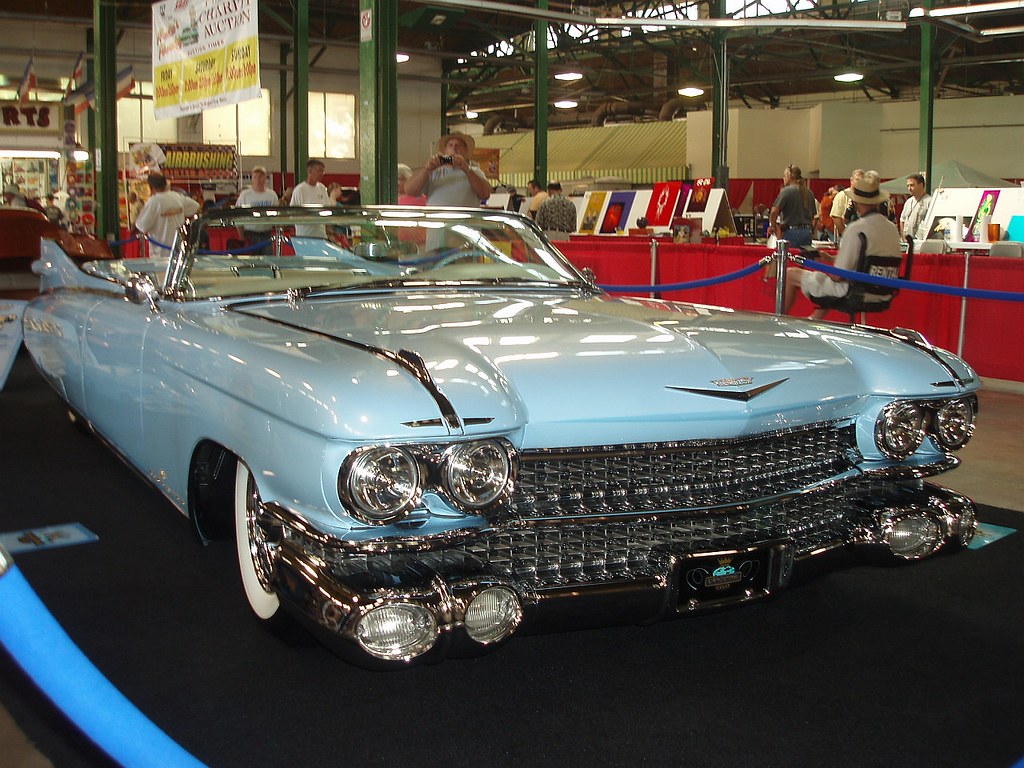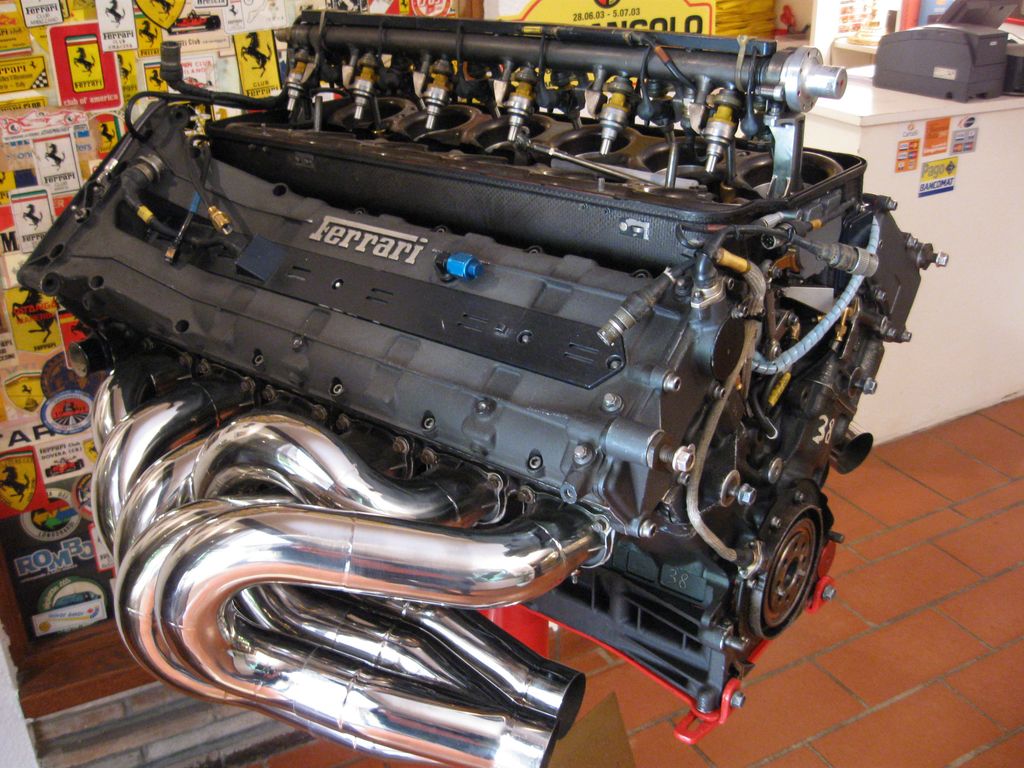
Ford, a titan of American industry since 1903, has carved an indelible mark on the automotive landscape, consistently innovating and pushing boundaries. While the company is celebrated for its revolutionary assembly lines and widespread vehicle production, it’s their muscle cars that truly ignite the passions of enthusiasts worldwide. These aren’t just vehicles; they are roaring emblems of power, freedom, and raw American ingenuity, each with a story as compelling as its performance.
From the thunderous roar of a big block V8 to the sleek, aggressive lines designed for pure speed, Ford’s muscle car offerings are a testament to an era when horsepower reigned supreme. In an automotive world increasingly focused on efficiency, these machines stand as cherished reminders of a time when the driving experience was about unbridled excitement and commanding presence. They’ve transcended mere transportation to become cultural touchstones, defining an era and inspiring generations of gearheads.
Today, essentially any Ford muscle car holds a degree of collectibility, but there are certain unique beasts that possess an almost mythical rarity, their values soaring into the hundreds of thousands of dollars. We’re talking about special editions, heavily modified screamers, and cars produced in such limited numbers that spotting one is an event in itself. Prepare to buckle up as we dive deep into 14 of the most collectible Ford muscle cars that demand your attention – vehicles you absolutely need to experience, even if ownership remains a distant dream.
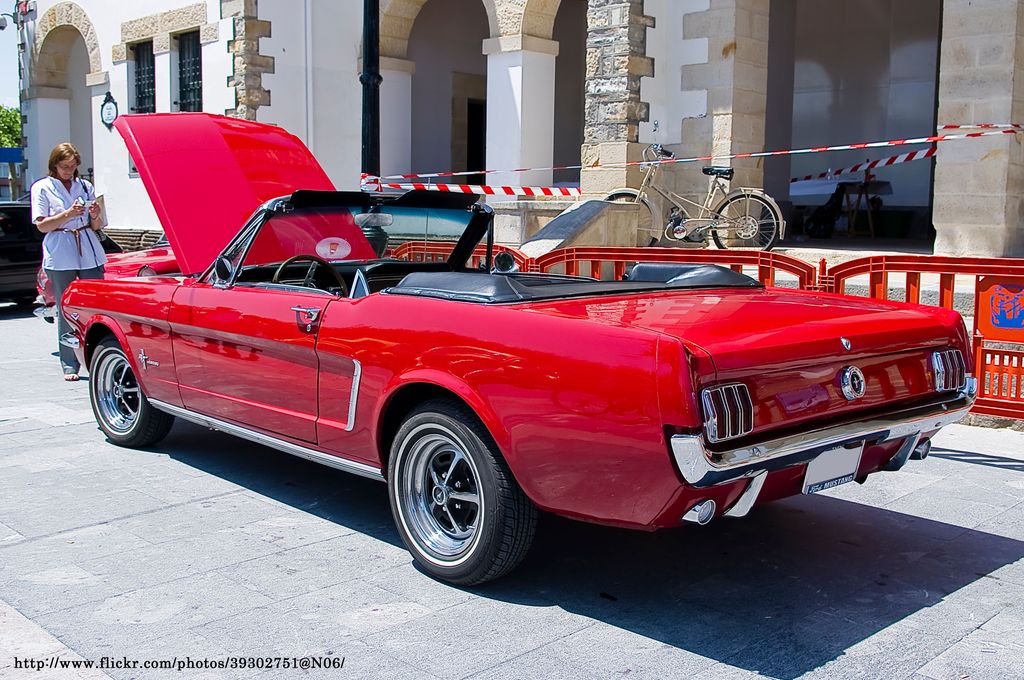
1. **1969-70 Ford Mustang Boss 429**The Ford Mustang Boss 429, produced for the 1969 and 1970 model years, stands as an automotive legend, born from a singular purpose: NASCAR dominance. Ford developed this monstrous machine to homologate its potent 429 cubic inch big block V8 engine for stock car racing. NASCAR’s rules at the time mandated that manufacturers build and sell at least 500 road-legal versions of any car they intended to race, and Ford dutifully complied, creating one of the rarest and most coveted Mustang variants ever.
What truly sets the Boss 429 apart is its colossal 429 cubic inch V8, featuring semi-hemispherical combustion chambers – effectively Ford’s answer to Chrysler’s Hemi. While officially rated at 375 horsepower and 450 lb.-ft of torque, the actual output was likely closer to a staggering 500 horsepower, a figure that commands respect even today. This power translated into formidable performance, with the Boss 429 capable of hitting 60 MPH in just 6.5 seconds and tearing through a quarter mile in 14 seconds on its way to a top speed of 128 MPH. Such raw force, combined with a close-ratio 4-speed manual transmission and a Traction-Lok limited-slip differential, ensured optimal control and exhilarating performance.
Ford produced only 859 road-legal Boss 429s in 1969 and another 499 in 1970, totaling 1,358 units, making them incredibly scarce. These cars also boasted unique visual cues like a functional hood scoop for cooling the massive engine and a front spoiler to enhance aerodynamics. Its rarity, legendary status, and direct connection to NASCAR’s golden age mean that if you can find one, you’re looking at an investment easily fetching prices upwards of $200,000 to $400,000 at auction, making it a pinnacle for any serious muscle car collector.
Car Model Information: 2017 Nissan Rogue SV
Caption: 1969 Boss 429
Layout: Longitudinal engine
Manufacturer: Ford Motor Company
Production: 1969–1970
Name: Mustang Boss 429
Class: Muscle car
BodyStyle: coupé
Assembly: Dearborn, Michigan
Height: 50.4 in
Abbr: on
Length: 187.4 in
Width: 71.7 in
Engine: 429 cuin
Transmission: manual transmission
Weight: 3870 lb
Categories: All Wikipedia articles needing clarification, All articles needing additional references, All articles with unsourced statements, Articles needing additional references from August 2008, Articles with short description
Summary: The Boss 429 Mustang is a high-performance Ford Mustang variant that was offered by Ford in 1969 and 1970. It featured a race-designed 429 cu in (7.0 L) semi-hemispherical head version of the big block 429 V8, offered in the car both to homologate the engine for NASCAR racing and to offer a bigger, more-powerful version of the popular small block 5 L Boss 302 Mustang.
The price of all the performance and modifications was steep: at nearly $5,000 a Boss 429 was roughly twice the price of the base model inline-6 Mustang. A total of 1,359 Boss 429s were produced.
Get more information about: Boss 429 Mustang
Buying a high-performing used car >>>
Brand: Ford Model: Mustang Boss 429
Price: $12,988 Mileage: 83,421 mi.
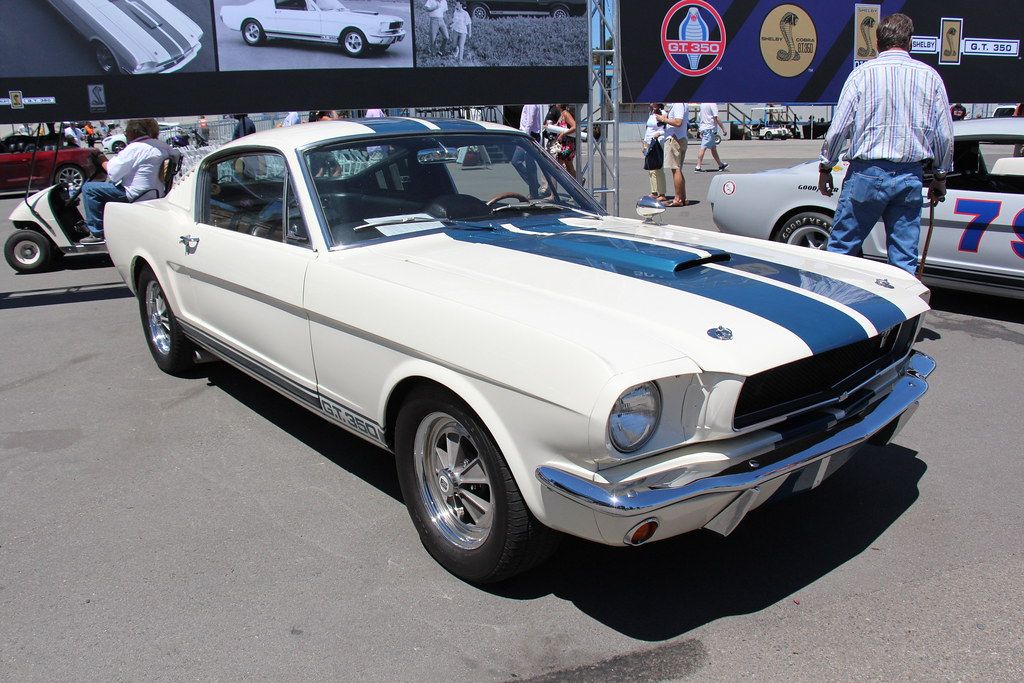
2. **1965 Ford Mustang Shelby GT350**The 1965 Ford Mustang Shelby GT350 is nothing short of a pioneer, often hailed as the car that truly launched Ford’s high-performance muscle car lineage. This iconic machine was the brainchild of the legendary race car driver and designer, Carroll Shelby, whose company, Shelby American, took the already popular Ford Mustang and transformed it into a track-ready beast. The story goes that Lee Iacocca’s team at Ford reached out to Shelby, and the rest, as they say, is history, giving birth to a true American icon.
Shelby rolled its first GT350s off the production line in 1965, and that inaugural year remains one of the most iconic for collectors. Under the hood, the GT350 housed a potent V8 engine, officially making 310 horsepower and 329 lb.-ft of torque. This power, coupled with performance upgrades like Koni shock absorbers and a heavy-duty suspension system, propelled the car from zero to 60 MPH in 6.7 seconds and allowed it to reach a top speed of 134 MPH. It was a vehicle designed for precision and speed, offering a driving experience that was both thrilling and engaging.
Exclusivity is a hallmark of the 1965 Shelby GT350, with only exactly 562 units built in total, including prototypes and the race-only R models. Its immense rarity makes it a prime target for reproductions, so finding an original, unadulterated example is a significant achievement and a truly special find. These beasts rarely come cheap; when they do appear at auction, they are known to command prices upwards of $300,000, solidifying their status as an indispensable part of muscle car history and a must-have for discerning collectors.
Car Model Information: 2017 Nissan Rogue SV
Name: Shelby Mustang
Caption: 1965 Shelby Mustang GT350
Manufacturer: Unbulleted list
Aka: Unbulleted list
Production: Unbulleted list
Designer: John Chun
Assembly: Unbulleted list
Class: Unbulleted list
Platform: Unbulleted list
Related: Ford Mustang (first generation),Ford Mustang (fifth generation)
Layout: Front-engine, rear-wheel-drive layout
Categories: 1970s cars, 2000s cars, 2010s cars, 2020s cars, All Wikipedia articles written in American English
Summary: The Shelby Mustang is a high-performance variant of the Ford Mustang built by Shelby American from 1965 to 1967 and by the Ford Motor Company from 1968 to 1970.
In 2005, Ford revived the Shelby nameplate for a high-performance model of the fifth-generation Ford Mustang.
Get more information about: Shelby Mustang
Buying a high-performing used car >>>
Brand: Ford Model: Mustang Shelby GT350
Price: $12,988 Mileage: 83,421 mi.
Read more about: From Dust to Dollars: The 10 Most Epic Barn-Find Cars That Will Blow Your Mind!
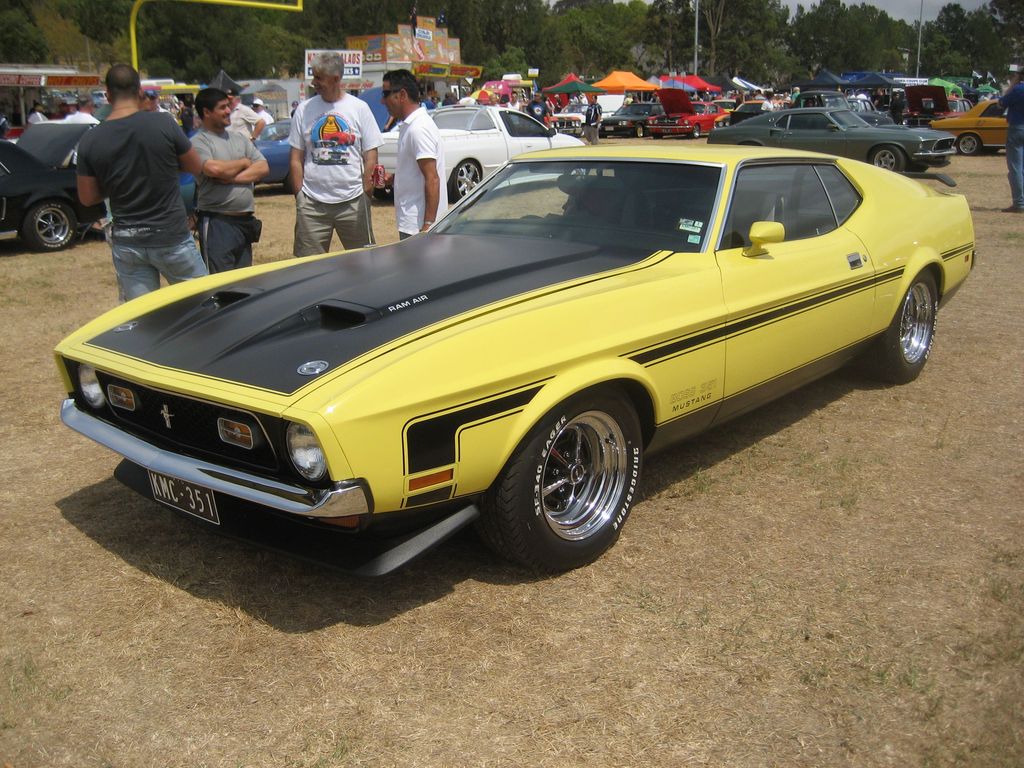
3. **1971 Ford Mustang Boss 351**The 1971 Ford Mustang Boss 351 holds a special place in the pantheon of Ford muscle cars, representing one of the last true high-performance machines before the automotive industry faced significant changes brought on by the Clean Air Act of 1970. It was Ford’s final hurrah in the Boss lineup after the cessation of the Boss 302 and Boss 429, making it a poignant and powerful bookmark in Mustang history. The car itself was physically larger than previous Mustangs, initially designed to accommodate increasingly massive engines, though those plans never fully materialized for later models.
Despite its larger stature, the heart of the 1971 Boss 351 was an absolute marvel: the 351 cubic inch “Cleveland” V8 engine. This engine was officially listed as capable of 330 horsepower, a formidable figure for its size. Its performance was impressive, sprinting to 60 MPH in a swift 6.6 seconds – a mere 0.3 seconds off the pace of the 1971 Mustang Mach 1 equipped with a much larger 429 Cobra Jet engine. This demonstrated the exceptional efficiency and power density of the Cleveland V8, making it something truly special.
In terms of exclusivity, only 1,806 Boss 351s ever rolled off the factory floor, and Ford never returned to produce another one in 1972 or any subsequent year. This limited production run ensures its rarity and desirability among collectors. Interestingly, compared to some of its Boss brethren, the 1971 Boss 351 remains one of the more attainable collectible Ford muscle cars, with prices generally staying well under $100,000. This makes it an attractive option for enthusiasts seeking a significant piece of muscle car history without venturing into the stratospheric price ranges of other rare models.
Car Model Information: 2017 Nissan Rogue SV
Name: Mustang (first generation)
Caption: 1965 Ford Mustang
Aka: Ford T5 (Germany)
Manufacturer: Ford Motor Company
Assembly: Unbulleted list
Production: March 1964 – June 1973
ModelYears: 1965–1973
Class: Unbulleted list
BodyStyle: Unbulleted list
Layout: Front-engine, rear-wheel drive layout
Designer: Gale Halderman
Related: Unbulleted list
Successor: Ford Mustang (second generation)
Categories: 1970s cars, All Wikipedia articles written in American English, All articles with unsourced statements, Articles with short description, Articles with unsourced statements from January 2020
Summary: The first-generation Ford Mustang was manufactured by Ford from March 1964 until 1973. The introduction of the Mustang created a new class of automobiles known as pony cars. The Mustang’s styling, with its long hood and short deck, proved wildly popular and inspired a host of competition.
It was introduced on April 17, 1964, as a hardtop and convertible, with the fastback version following in August 1964. Upon introduction, the Mustang, sharing its platform with the Falcon, was slotted into the compact car segment.
The first-generation Mustangs grew in overall dimensions and engine power with each revision. The 1971 model featured a drastic redesign. After an initial surge, sales steadily declined, and Ford began working on a new generation Mustang. With the onset of the 1973 oil crisis, Ford was prepared, having already designed the smaller Mustang II for the 1974 model year. This new car shared no components with preceding models.
Get more information about: Ford Mustang (first generation)
Buying a high-performing used car >>>
Brand: Ford Model: Mustang Boss 351
Price: $12,988 Mileage: 83,421 mi.
Read more about: Beyond the Pony: Unearthing Ford’s Fastest ’60s Muscle Car Gems You Never Knew Existed
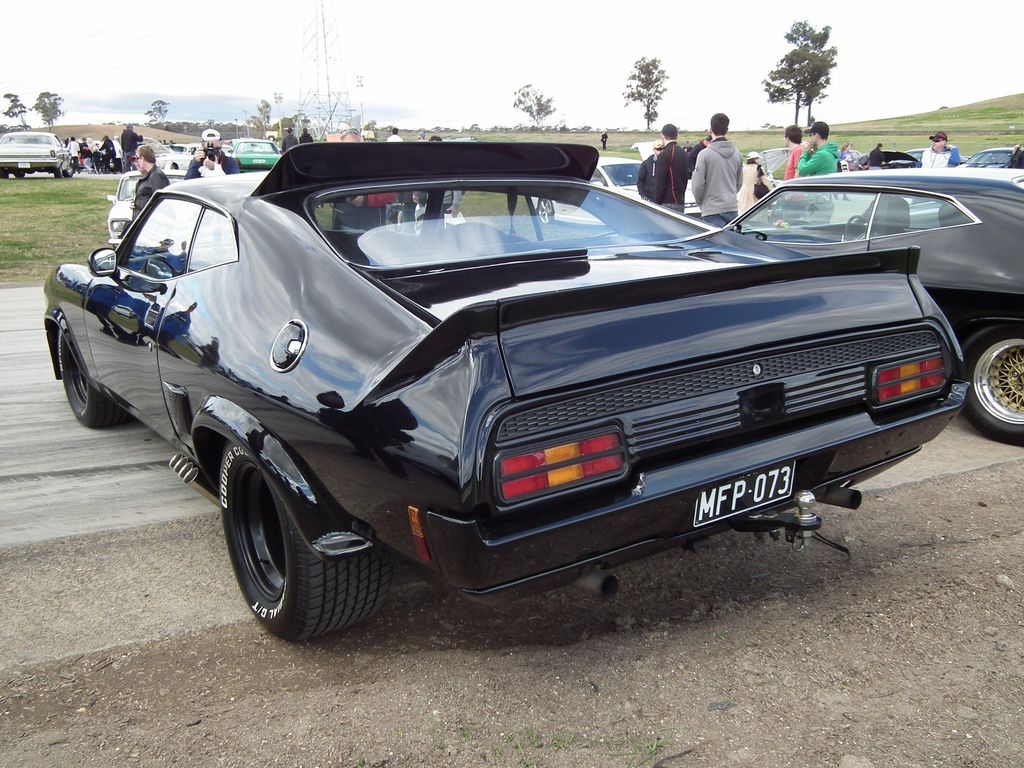
4. **1973 Ford Falcon XB GT**The 1973 Ford Falcon XB GT might not be the most exclusive or expensive collectible on this list, but it undoubtedly possesses one of the most captivating stories, elevating it to the status of a true cultural icon. This Australian-made powerhouse gained worldwide fame as the menacing V8 Interceptor in the classic post-apocalyptic films “Mad Max” and “Mad Max 2: The Road Warrior.” Its silver screen legacy has immeasurably boosted its appeal among enthusiasts globally, transforming it from a powerful car into a cinematic legend.
Ford Australia produced the Falcon XB GT from 1973 through 1976. To accurately recreate the iconic movie car, you’d need a 1973 hardtop variant, ideally equipped with the formidable 351 Cleveland V8 engine – the same powerplant that graced the 1971 Ford Mustang Boss 351. A crucial detail for international collectors is that all Falcon XB GTs were manufactured for Australian buyers, meaning they feature the steering wheel on the right side of the car, a distinctive characteristic that adds to its unique charm and identity.
In terms of production, Ford Australia built a total of 1,952 XB GT sedans and 949 XB GT hardtops. The hardtop variant, being the movie-accurate version, commands a premium. A fully modified example, replicating the V8 Interceptor, can fetch a pretty penny, making it a highly desirable acquisition for film buffs and muscle car collectors alike. Beyond its Hollywood fame, the XB GT itself represented the pinnacle of Ford’s offerings during the vibrant Australian muscle car era, showcasing a potent fusion of power, distinctive aerodynamic design, and undeniable style, complete with a bold grille, dual headlights, a functional hood scoop, and a rear spoiler.
Car Model Information: 2017 Nissan Rogue SV
Caption: Ford Falcon 500 (XB) sedan with GS Rally Pack
Name: Ford Falcon (XB) , Ford Futura (XB) , Ford Fairmont (XB)
Manufacturer: Ford Australia
Production: September 1973 – July 1976
Predecessor: Ford Falcon (XA)
Successor: Ford Falcon (XC)
Class: Full-size car
BodyStyle: Sedan (car)
Engine: 200ci 6-cyl (3.3L),250ci 6-cyl (4.1L),302ci V8 (4.9L),351ci V8 (5.8L)
Transmission: 3spd manual (column),4spd manual (floor),3spd auto (column & floor)
Wheelbase: 2819 mm
Abbr: on
Length: 4808 mm
Width: 1900 mm
Height: 1369 mm
Weight: 1394 kg
Designer: Wayne Draper
Categories: 1970s cars, Articles with short description, Cars discontinued in 1976, Cars introduced in 1973, Cars of Australia
Summary: The Ford Falcon (XB) is a full-size car that was produced by Ford Australia from 1973 to 1976. It was the second iteration of the third generation of the Falcon and also included the Ford Fairmont (XB), the luxury-oriented version.
Get more information about: Ford Falcon (XB)
Buying a high-performing used car >>>
Brand: Ford Model: Falcon XB GT
Price: $12,988 Mileage: 83,421 mi.
Read more about: Buckle Up, These 8 Legendary Movie Cars Were So Iconic, They Practically Drove the Film Themselves
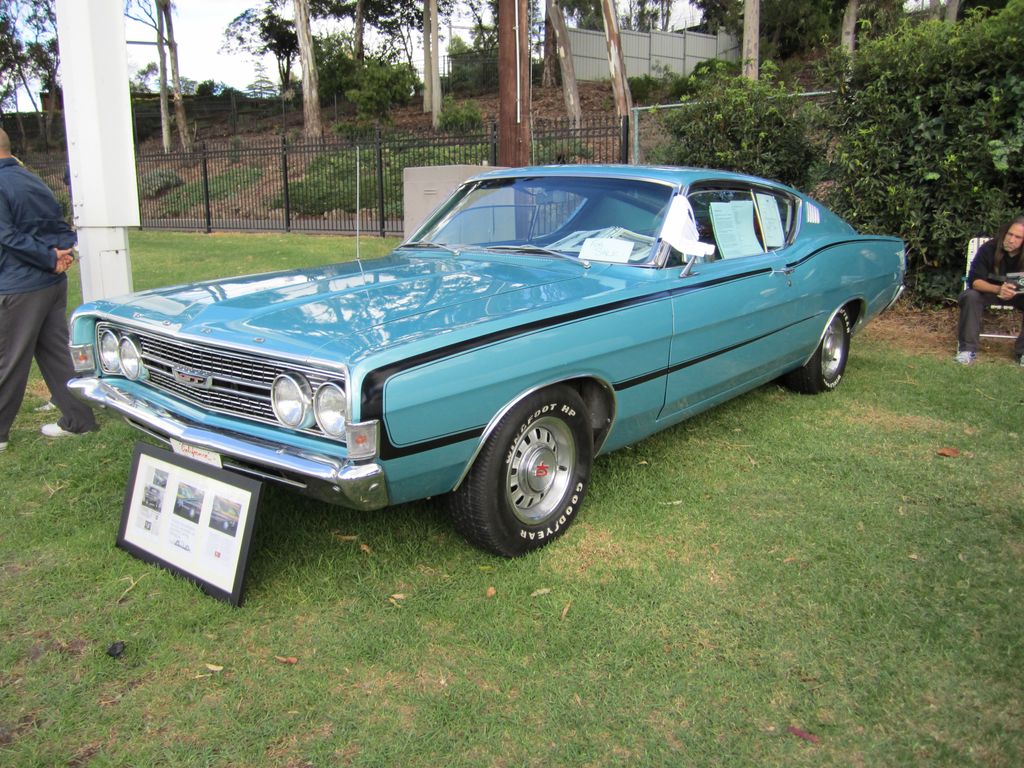
5. **1968 Ford Fairlane Torino 428**The 1968 Ford Fairlane Torino 428, often referred to as the Ford Torino GT, presents a fascinating paradox in the world of muscle cars. It possessed all the visual cues and performance specifications of a formidable muscle car, yet it was originally positioned as a more budget-oriented vehicle. The early production of this model year was significantly impacted by a strike, and Ford implemented several midyear changes to reduce costs. However, late in the model year, a game-changing option became available: the R-code Cobra Jet 428 engine, offered across all models except the station wagon, transforming this seemingly modest car into a certified sleeper.
This 428 Cobra Jet engine was one of Ford’s most impressive powerplants of the 1960s. While officially rated at 335 horsepower, independent testing by MotorTrend years later revealed a more accurate figure of around 365 horsepower and approximately 452 lb.-ft of torque, with some believing it was capable of producing up to 415 HP. Ford later famously transplanted this engine into the Mustang, helping to cement its status as an iconic muscle car. But in the Torino GT, it created an unassuming powerhouse, a true wolf in sheep’s clothing that could surprise many on the street.
What truly distinguishes the 1968 Ford Fairlane Torino 428 is its extreme rarity, particularly when equipped with the original 428 Cobra Jet engine. Ford reportedly produced only about 660 examples of this configuration in 1968. While the engine made a return for the 1969 model year with approximately 3,910 units produced, finding a 1968 Torino GT with its original 428 is significantly more challenging. This scarcity, combined with its unique history as a budget car that became a muscle car legend through a late-year engine option, makes it a highly sought-after and collectible piece of Ford’s performance heritage.
Car Model Information: 2017 Nissan Rogue SV
Aka: Ford Fairlane (Venezuela)
Name: Ford Torino
Caption: 1970 Ford Torino Cobra SportsRoof
Manufacturer: Ford Motor Company
Production: 1968–1976
Class: Mid-size car,muscle car
Layout: FR layout
Related: Mercury Montego
Assembly: ubl
Predecessor: Ford Fairlane (Americas)
Successor: Ford LTD II
Categories: 1960s cars, 1970s cars, All Wikipedia articles written in American English, All articles with vague or ambiguous time, Articles with short description
Summary: The Ford Torino is an automobile that was produced by Ford for the North American market between 1968 and 1976. It was a competitor in the intermediate market segment and essentially a twin to the Mercury Montego line.
Just as the Ford LTD had been the upscale version of the Ford Galaxie, the Torino was initially an upscale variation of the intermediate-sized Ford Fairlane. In the 1968 and 1969 model years, the intermediate Ford line consisted of lower-trim Fairlanes and its subseries, the upper-trim Torino models. In 1970, Torino became the primary name for Ford’s intermediate, and the Fairlane was now a subseries of the Torino. In 1971, the Fairlane name was dropped altogether, and all Ford intermediates were called Torino.
Most Torinos were conventional cars, and generally the most popular models were the four-door sedans and two-door hardtops. However, Ford produced some high-performance “muscle car” versions of the Torino by fitting them with large powerful engines, such as the 428 cu in (7.0 L) and 429 cu in (7.0 L) “Cobra-Jet” engines. Ford also chose the Torino as the base for its NASCAR entrants, and it has a successful racing heritage.
Get more information about: Ford Torino
Buying a high-performing used car >>>
Brand: Ford Model: Fairlane Torino 428
Price: $12,988 Mileage: 83,421 mi.
Read more about: Beyond the Pony: Unearthing Ford’s Fastest ’60s Muscle Car Gems You Never Knew Existed
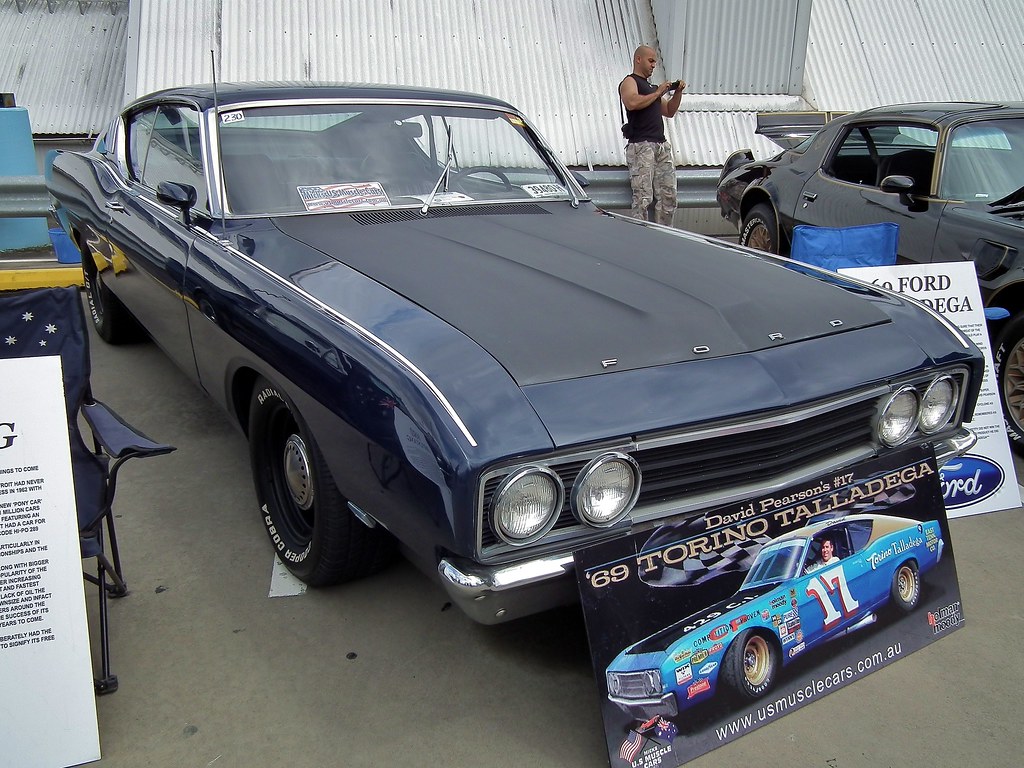
6. **1969 Ford Talladega**Just like its Mustang counterpart, the Boss 429, the 1969 Ford Talladega was a machine purpose-built for the racetrack, specifically to dominate NASCAR. Ford’s ambition to conquer the high-speed oval circuits necessitated the production of a specific number of these cars for public sale to meet homologation requirements. What emerged was a modified Ford Torino Cobra, a distinctively aerodynamic marvel often dubbed the 1969 Ford Torino GT Talladega Special, designed with extreme high-speed stability and reduced drag in mind.
Ford implemented several strategic modifications to make the Talladega race-ready. While the actual race cars featured welded-on front bumpers and more aggressive aero, the publicly available versions still boasted a unique and aerodynamic front end with a flush grille and an extended nose, vastly different from standard Torinos. It also featured a flush rear window design, all contributing to its superior slipperiness through the air. Under the hood, the Talladega packed Ford’s exceptional 428 Cobra Jet engine, typically paired with a robust C6 automatic transmission. This powerplant delivered around 335 horsepower and approximately 440 lb-ft of torque, ensuring that the Talladega could move with incredible purpose when the pedal was put down.
NASCAR mandated that Ford build 500 examples for public consumption, but Ford went above and beyond, producing a total of 750 units. This makes the 1969 Ford Talladega one of the rarest Ford vehicles ever manufactured, a true gem for collectors. These cars do not frequently appear on the open market and are typically found at high-profile auctions rather than private sales. Its direct link to Ford’s NASCAR glory, its distinctive aerodynamic design, and its extreme scarcity make it a highly prized artifact of American racing and muscle car history, capable of commanding prices between $70,000 and $108,000, and sometimes even more.
Read more about: Beyond the Pony: Unearthing Ford’s Fastest ’60s Muscle Car Gems You Never Knew Existed
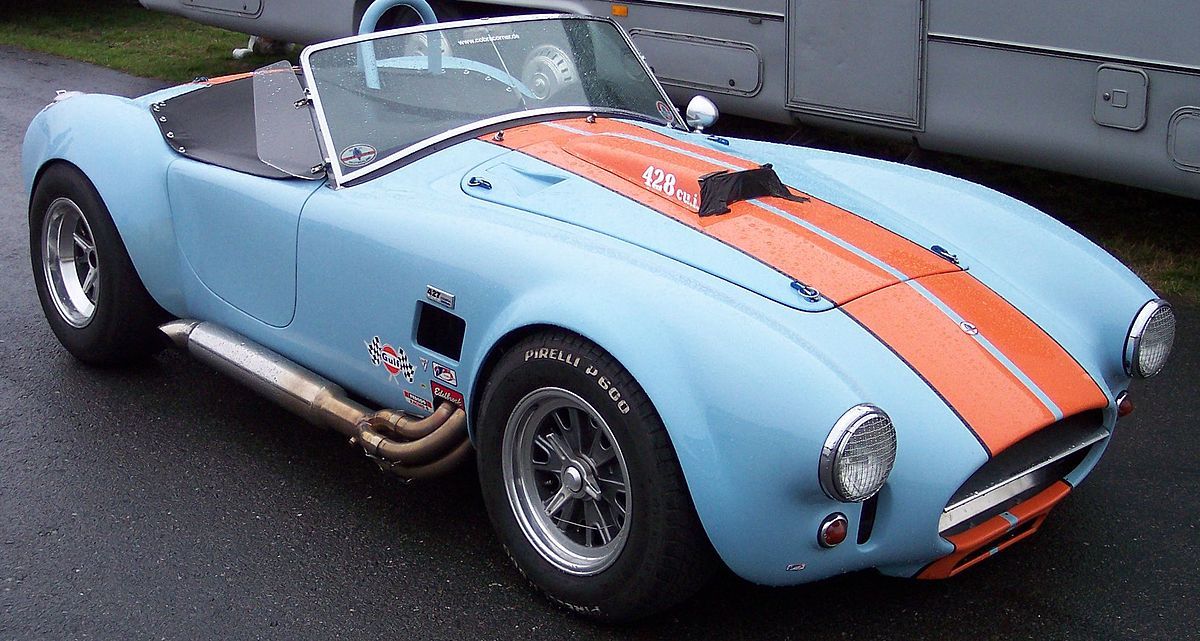
7. **1962-68 Ford Shelby Cobra**The Ford Shelby Cobra is a legitimate legend, a small but mighty roadster that combined American V8 power with a lightweight British chassis, creating a sensation that captured the hearts of enthusiasts and famously beat its main competitor, the Chevy Corvette. This iconic machine was a joint venture, bearing the names of all three companies responsible for its inception: Ford, AC Cars (who provided the chassis), and Carroll Shelby’s Shelby American, who engineered its potent heart. These British-style cruisers may not have looked like much in terms of size, but their performance was absolutely ferocious.
The genius of the Shelby Cobra lay in its incredible power-to-weight ratio. With a curb weight of just 2,480 pounds, strapping a powerful Ford V8 into such a lithe frame resulted in cars that could achieve astonishing speeds and acceleration. Early models from 1962 to 1964 were initially fitted with either a 260 cubic inch or a 289 cubic inch V8. However, in 1965, the Cobra evolved into its most fearsome iteration with the introduction of the mighty 427 cubic inch V8. For collectors seeking the highest amount of raw speed and power, the 1965-1967 427 Cobras are the ultimate prize.
Rarity and expense are inherent to the Shelby Cobra’s mystique. Across its entire six-year production run, only about 1,000 Cobras were produced, making any original example incredibly scarce and valuable. When these masterpieces do make a rare appearance for sale, they typically fetch around $160,000, with some exceptional examples soaring to as much as a quarter of a million dollars or more. Their enduring appeal has also spawned a thriving industry of high-quality replicas, allowing enthusiasts to experience the Cobra’s magic, but nothing compares to the historical significance and pure thrill of owning an original.
Car Model Information: 2017 Nissan Rogue SV
Name: Ford Shelby Cobra
Manufacturer: Ford Motor Company
Class: concept car,sports car
BodyStyle: Roadster (automobile)
Layout: FR layout
Engine: V10 engine
Transmission: Manual transmission
Weight: 3075.4 lb
Abbr: on
Related: Shelby Cobra
Designer: Advanced Product Creation,Carroll Shelby
Categories: All articles with unsourced statements, Articles with short description, Articles with unsourced statements from March 2020, Ford concept vehicles, Rear-wheel-drive vehicles
Summary: The Ford Shelby Cobra is a concept car that Ford unveiled at the 2004 North American International Auto Show in Detroit, Michigan. The Shelby Cobra concept is a roadster inspired by the original AC Cobra that AC Cars developed in 1961.
Get more information about: Ford Shelby Cobra Concept
Buying a high-performing used car >>>
Brand: Ford Model: Shelby Cobra
Price: $12,988 Mileage: 83,421 mi.
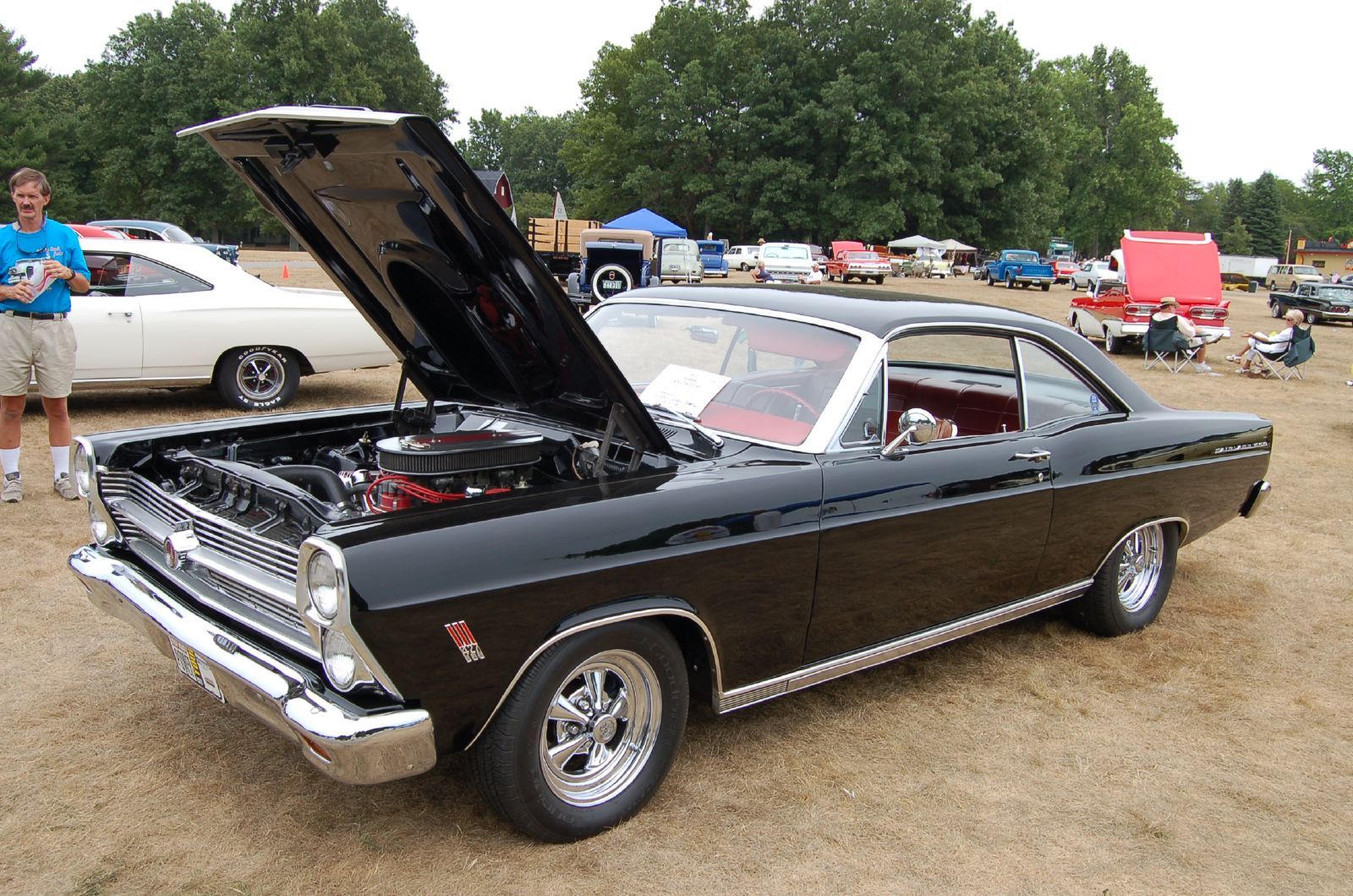
8. **1967 Ford Fairlane 427**Ah, the 1967 Ford Fairlane 427 – a true behemoth designed not just for the road, but for absolute domination of the drag strip. This high-performance variant of the Fairlane perfectly encapsulates the raw, unadulterated spirit of the muscle car era, a time when horsepower was king and quarter-mile times were spoken of in hushed, reverent tones. It was built for one purpose: to go blisteringly fast in a straight line, embodying a thrilling simplicity that still captivates us today.
Underneath its purposeful sheet metal beat a massive 7.0L (427 cu in) V8 engine, generating an impressive 425 horsepower and a gargantuan 480 lb-ft of torque. This kind of grunt, channeled through a four-speed manual transmission, allowed drivers to truly become one with the machine, fully engaging with its potent heart as it devoured the asphalt. The Fairlane 427 also featured lightweight components, a clever touch that further enhanced its formidable power-to-weight ratio, optimizing it for those crucial drag racing sprints.
Visually, this drag strip warrior was hard to miss, boasting a distinctive fiberglass hood adorned with a teardrop-shaped scoop, a necessary addition to accommodate its high-rise intake manifold. It was a clear declaration of intent. Furthermore, a notable feature of its time was the inclusion of front disc brakes, offering improved stopping power and control, a welcome advancement for a car built to achieve such electrifying speeds. The 1967 Fairlane 427 is a magnificent piece of Ford’s racing heritage, a testament to pure, unadulterated performance.
Car Model Information: 1956 Ford Fairlane Sedan
Name: Ford Fairlane
Aka: Ford LTD
Manufacturer: Ford Australia
Production: 1959–2007
Assembly: Broadmeadows Assembly Plant,Eagle Farm
Class: Full-size luxury car
BodyStyle: sedan (car)
Related: Ford Falcon (Australia)
Categories: 1960s cars, 1970s cars, 1980s cars, 1990s cars, 2000s cars
Summary: The Ford Fairlane and LTD are full-sized luxury vehicles produced in a series of models by Ford Australia between 1959 (with the LTD commencing production in 1973) and 2007.
From 1959 to 1964, the Fairlane was a locally assembled version of the American Ford Fairlane, which had taken its name from Henry Ford’s estate, Fair Lane, near Dearborn, Michigan. The car was Ford Australia’s top-of-the-range model until replaced by an Australian-assembled version of the full-sized American Ford Galaxie. In 1967, Ford Australia reintroduced the Fairlane, this time as an Australian-developed, luxury, long-wheelbase version of its mainstream Falcon/Fairmont, positioned between the Falcon and the Galaxie. The locally assembled Galaxie evolved into the LTD which was itself replaced in 1973 by an Australian-developed, Fairlane-based model, also known as the Ford LTD. Unlike its designation in Australia, in North America the LTD was not considered a luxury vehicle. In Australia, “LTD” originally stood for “Lincoln Type Design”, although Ford Australia later promoted a connection with the meaning “Limited”.
The Fairlane and LTD competed in the marketplace with the Holden Brougham (1968–1971), the Statesman (1971–1984), and later with the Holden Statesman and Caprice (1990–2007).
Ford produced the Fairlane/LTD at the Broadmeadows Assembly Plant and Eagle Farm, Queensland, in the early years. Until around March/April 1978 with the upcoming release of the XD Falcon and its derivatives, Ford consolidated Falcon production at Campbellfield and Fairlane/LTD manufacturing to Eagle Farm. Around the release of the next generation during the EA Falcon era (1988), Eagle Farm ceased manufacture of cars and only produced heavy trucks until its closure in 1998.
Get more information about: Ford Fairlane (Australia)
Buying a high-performing used car >>>
Brand: Ford Model: Fairlane
Price: $19,991 Mileage: 88,500 mi.
Read more about: Beyond the Pony: Unearthing Ford’s Fastest ’60s Muscle Car Gems You Never Knew Existed
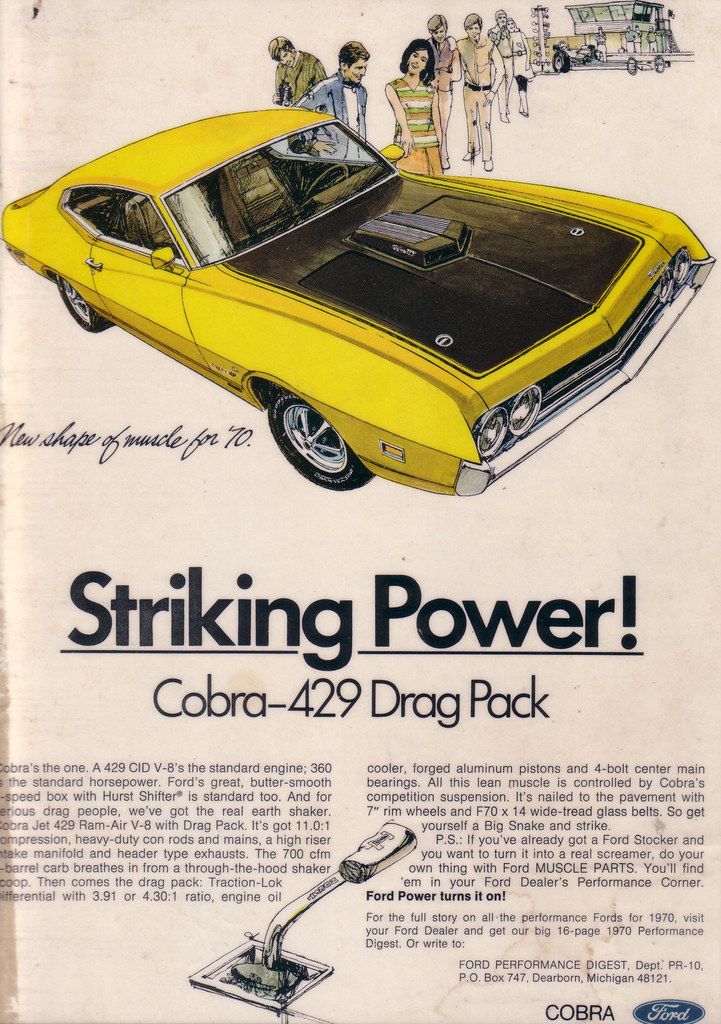
9. **1970 Ford Torino Cobra**If you’re looking for a muscle car that screams “peak American automotive prowess,” then the 1970 Ford Torino Cobra demands your attention. This beast stands as a powerful testament to Ford’s unwavering commitment to high-performance machines, perfectly tailored for enthusiasts who craved both undeniable style and substantial, earth-shaking power during the golden age of American muscle cars. It’s a car that truly delivers on its promise of an exhilarating drive, blending aggressive aesthetics with an even more aggressive powertrain.
Powering this magnificent Cobra was a 7.0L (429 cu in) Super Cobra Jet V8 engine, a name that alone evokes images of raw, untamed power. This formidable powerplant churned out around 375 horsepower and an equally impressive 450 lb-ft of torque, ensuring that every push of the pedal delivered an electrifying surge. Drivers could choose to harness this power through either a four-speed manual transmission, offering direct control, or an optional C6 automatic transmission, making it accessible to a wider array of enthusiasts who just wanted to feel that incredible acceleration.
One of the most iconic and visually arresting features of the Torino Cobra was undoubtedly the “Shaker” hood scoop. This wasn’t just for show; it was attached directly to the air cleaner and visibly shook with the engine’s vibrations, a visceral demonstration of the raw power lurking beneath. Complementing this was a Ram-Air induction system, designed to enhance airflow and boost the engine’s performance. For those truly dedicated to drag racing, the optional Drag Pack offered a choice of 3.91 or 4.30 rear axle ratios, ensuring optimal launch and straight-line speed. With its prominent grille and bold striping, the Torino Cobra made a powerful visual statement that perfectly matched its performance credentials.
Car Model Information: 2017 Nissan Rogue SV
Aka: Ford Fairlane (Venezuela)
Name: Ford Torino
Caption: 1970 Ford Torino Cobra SportsRoof
Manufacturer: Ford Motor Company
Production: 1968–1976
Class: Mid-size car,muscle car
Layout: FR layout
Related: Mercury Montego
Assembly: ubl
Predecessor: Ford Fairlane (Americas)
Successor: Ford LTD II
Categories: 1960s cars, 1970s cars, All Wikipedia articles written in American English, All articles with vague or ambiguous time, Articles with short description
Summary: The Ford Torino is an automobile that was produced by Ford for the North American market between 1968 and 1976. It was a competitor in the intermediate market segment and essentially a twin to the Mercury Montego line.
Just as the Ford LTD had been the upscale version of the Ford Galaxie, the Torino was initially an upscale variation of the intermediate-sized Ford Fairlane. In the 1968 and 1969 model years, the intermediate Ford line consisted of lower-trim Fairlanes and its subseries, the upper-trim Torino models. In 1970, Torino became the primary name for Ford’s intermediate, and the Fairlane was now a subseries of the Torino. In 1971, the Fairlane name was dropped altogether, and all Ford intermediates were called Torino.
Most Torinos were conventional cars, and generally the most popular models were the four-door sedans and two-door hardtops. However, Ford produced some high-performance “muscle car” versions of the Torino by fitting them with large powerful engines, such as the 428 cu in (7.0 L) and 429 cu in (7.0 L) “Cobra-Jet” engines. Ford also chose the Torino as the base for its NASCAR entrants, and it has a successful racing heritage.
Get more information about: Ford Torino
Buying a high-performing used car >>>
Brand: Ford Model: Torino Cobra
Price: $12,988 Mileage: 83,421 mi.
Read more about: Beyond the Pony: Unearthing Ford’s Fastest ’60s Muscle Car Gems You Never Knew Existed
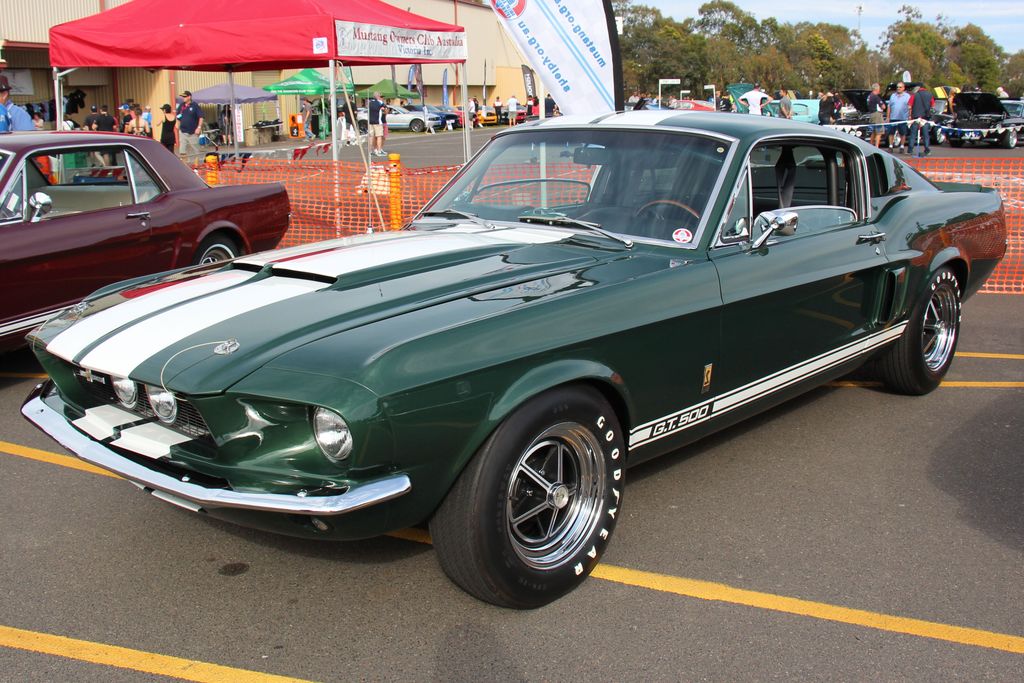
10. **1967 Shelby Mustang GT500 Fastback**The 1967 Shelby Mustang GT500 Fastback isn’t just a car; it’s a legend, an iconic and undeniably powerful variant of the Mustang that emerged from the famed collaboration between the visionary Carroll Shelby and Ford. Introduced as the top-tier Shelby Mustang, the GT500 masterfully blended the Mustang’s inherent elegance with a host of high-performance modifications, creating a machine that was as beautiful to behold as it was thrilling to drive. It truly represents the pinnacle of what a muscle car could be in its era.
At its heart, the GT500 Fastback housed a formidable 428 cubic inch Police Interceptor V8 engine. This powerhouse delivered a robust 355 horsepower and around 420 lb-ft of torque, figures that positioned the GT500 as one of the most potent Ford muscle cars of its time. Mated to a four-speed manual transmission, this setup provided drivers with precise, engaging control over its immense power, ensuring an unforgettable driving experience every time. It was engineered for performance, and it delivered it in spades.
Aesthetically, the GT500 Fastback was a sight to behold, featuring distinctive twin hood scoops that not only contributed to its aggressive appearance but also aided in essential engine cooling. Adding to its visual drama were the classic LeMans racing stripes, a signature Shelby touch that enhanced its undeniable curb appeal. Furthermore, fitted with performance-oriented tires, the GT500 was optimized for maximum traction, translating to superior acceleration and cornering capabilities. The 1967 Shelby Mustang GT500 Fastback is a timeless masterpiece, a perfect fusion of style, power, and racing pedigree that continues to captivate collectors worldwide.
Car Model Information: 2017 Nissan Rogue SV
Name: Shelby Mustang
Caption: 1965 Shelby Mustang GT350
Manufacturer: Unbulleted list
Aka: Unbulleted list
Production: Unbulleted list
Designer: John Chun
Assembly: Unbulleted list
Class: Unbulleted list
Platform: Unbulleted list
Related: Ford Mustang (first generation),Ford Mustang (fifth generation)
Layout: Front-engine, rear-wheel-drive layout
Categories: 1970s cars, 2000s cars, 2010s cars, 2020s cars, All Wikipedia articles written in American English
Summary: The Shelby Mustang is a high-performance variant of the Ford Mustang built by Shelby American from 1965 to 1967 and by the Ford Motor Company from 1968 to 1970.
In 2005, Ford revived the Shelby nameplate for a high-performance model of the fifth-generation Ford Mustang.
Get more information about: Shelby Mustang
Buying a high-performing used car >>>
Brand: Shelby Model: GT500 Fastback
Price: $12,988 Mileage: 83,421 mi.
Read more about: From Dust to Dollars: The 10 Most Epic Barn-Find Cars That Will Blow Your Mind!
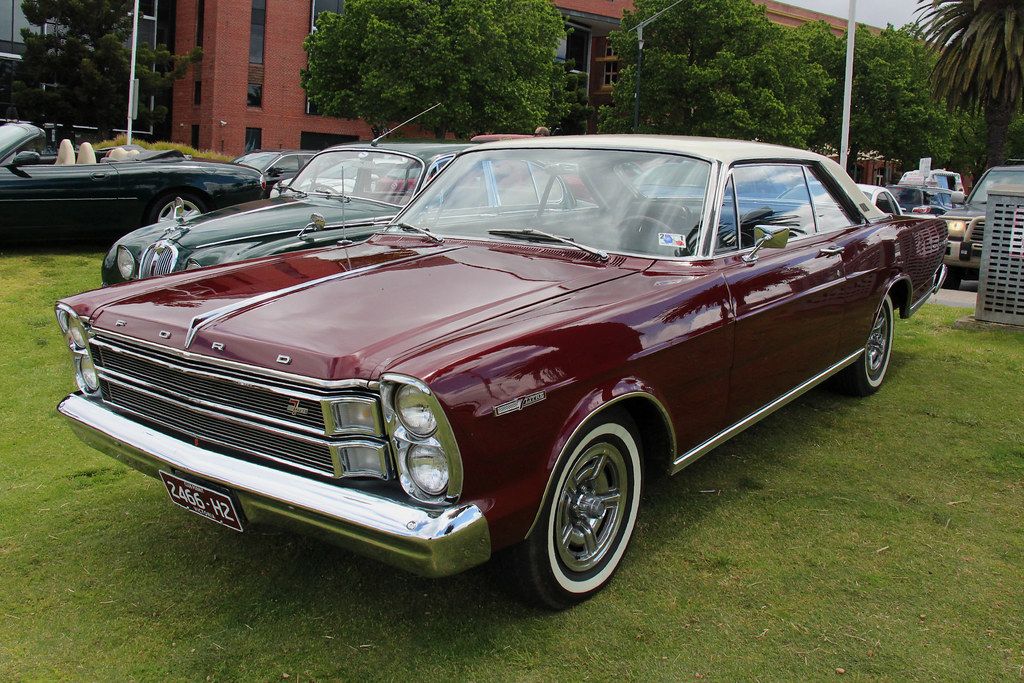
11. **1965 Ford Galaxie**Stepping into the 1965 Ford Galaxie is like taking a joyride back to a classic era of American automotive design and performance. As a proud member of Ford’s full-size car lineup, the Galaxie underwent a significant restyling for the 1965 model year, emerging with a sleeker, more contemporary appearance that instantly set it apart. It was available in a delightful array of body styles, including practical sedans, stylish hardtops, and exhilarating convertibles, catering to every taste and desire.
The heart of the 1965 Galaxie was a powerful engine that produced around 410 horsepower and an impressive 476 lb-ft of torque. This substantial power could be paired with either a four-speed manual transmission or a smooth automatic, offering drivers a fantastic blend of flexibility and engaging control over their driving experience. The combination of its refined design and potent engine created a package that was not only visually appealing but also incredibly powerful, making it a true standout on any road.
What really sealed the deal for many was the Galaxie’s sleek and elegant design, especially when combined with its high-performance capabilities. The convertible configuration, in particular, offered the sheer joy of open-air driving, making every journey an adventure. For those seeking a classic American cruiser with a serious punch, the 1965 Ford Galaxie remains a cherished icon, a testament to an era when style and raw power effortlessly coexisted, leaving an indelible mark on automotive history.
Car Model Information: 1961 Ford Galaxie Starliner
Name: Ford Galaxie
Caption: 1963 Ford Galaxie 500 4-Door Sedan
Manufacturer: Ford Motor Company
Production: 1958–1974 (United States),1964–1968 (Australia),1967–1983 (Brazil)
ModelYears: 1959–1974
Assembly: Homebush West,Australia,São Paulo,Brazil
Class: Full-size
Layout: FR layout
Predecessor: Ford Fairlane (Americas)
Successor: Ford LTD (Americas)
Categories: 1960s cars, 1970s cars, All articles with unsourced statements, Articles with short description, Articles with unsourced statements from February 2010
Summary: The Ford Galaxie is a car that was marketed by Ford in North America from the 1959 to 1974 model years. Deriving its nameplate from a marketing tie-in with the excitement surrounding the Space Race, the Galaxie was offered as a sedan within the full-size Ford range throughout its production run. In the full-size segment, the model line competed against the Chevrolet Impala and Plymouth Fury.
The model line was assembled by Ford in multiple sites across the United States; four generations of the model line were produced. The Galaxie was also produced locally by Ford Australia and Ford Brasil, adopting commonality from the third-generation 1965 design.
Get more information about: Ford Galaxie
Buying a high-performing used car >>>
Brand: Ford Model: Galaxie
Price: $44,997 Mileage: 65,447 mi.
Read more about: Beyond the Drag Strip: The Definitive Guide to the Best Daily Driver Muscle Cars of the ’60s
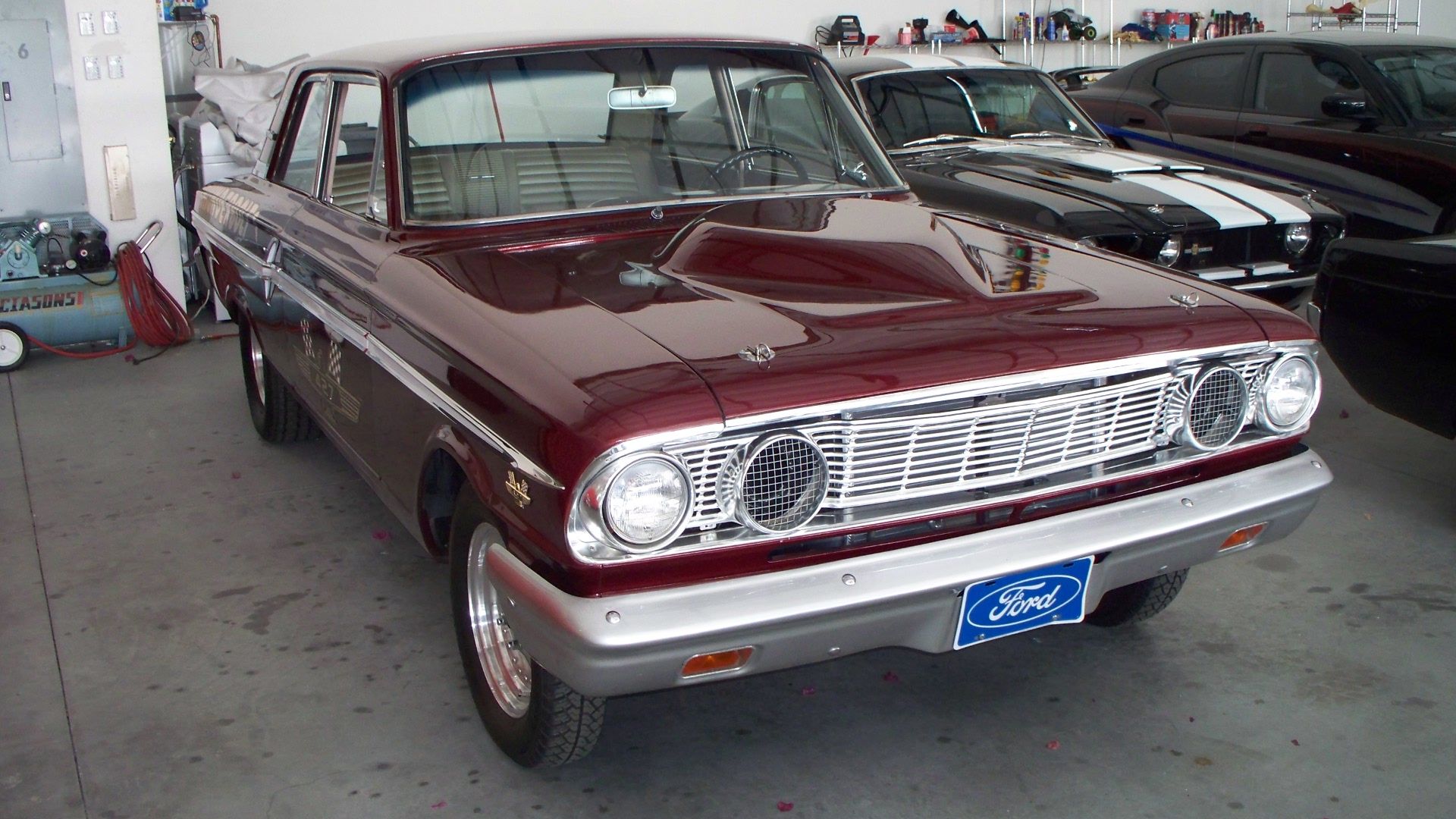
12. **1964 Ford Fairlane Thunderbolt**Now, if you’re talking about a car built with a singular, laser-focused purpose, the 1964 Ford Fairlane Thunderbolt is precisely that machine. This isn’t your everyday Sunday cruiser; this was a vehicle forged specifically for racing, and it made absolutely no apologies for it. Ford stripped this beast down to its very essence, tearing out the backseat, all sound insulation, the radio, and even the heater, all in a relentless pursuit of weight savings. The original windows, too, were crafted from lightweight Plexiglass, further shaving crucial pounds. In short, comfort was definitely not on the menu; speed was the only dish being served.
What the Thunderbolt lacked in creature comforts, it more than made up for in pure, unadulterated speed-making equipment. Ford meticulously reworked the suspension, bolted on a host of performance parts, and applied precision tunings, all culminating in a car that could tear through a quarter-mile in a staggering 11.61 seconds. Under its hood, a colossal 427 cubic inch (7.0-liter) V8 engine officially produced 425 horsepower and 480 lb-ft of torque. However, in the thrilling reality of the drag strip, its output was likely even higher, hinting at an untamed power that truly pushed boundaries.
Exclusivity is woven into the very fabric of the 1964 Ford Fairlane Thunderbolt. Ford reportedly only made about 100 of these purpose-built monsters, with a nearly even split between automatic and manual transmissions. Coming across one of these automotive titans today is nothing short of a rare treat, a chance to witness a piece of racing history up close. While they undoubtedly command a hefty price, usually upwards of $200,000, their scarcity and direct connection to Ford’s drag racing glory make them an incredibly prized possession for the most discerning collectors.
Car Model Information: 2017 Nissan Rogue SV
Name: Ford Fairlane Thunderbolt
Caption: Ford Fairlane Thunderbolt
Manufacturer: Ford Motor Company
ModelYears: 1964
Class: Muscle car
Assembly: Dearborn, MI
BodyStyle: sedan (automobile)
Layout: FR layout
Related: Mercury Cyclone
Wheelbase: 115.5 in
Abbr: on
Length: 197.5 in
Width: 72.5 in
Transmission: Cruise-O-Matic#MX.2FFX,manual transmission
Engine: {{convert,427,cuin,L,1,abbr=on,Ford FE engine#427
Weight: 3203 lb
Categories: All articles covered by WikiProject Wikify, All articles with bare URLs for citations, Articles covered by WikiProject Wikify from September 2022, Articles needing cleanup from September 2022, Articles with bare URLs for citations from September 2022
Summary: The Ford Fairlane Thunderbolt is a limited production, factory experimental, drag racing version of the Ford Fairlane produced during the 1964 model year only. A total of 100 units were produced; forty-nine 4-speeds and fifty-one automatics. A 4 speed secured the stick CLASS win at the US Nationals and secured the 1964 NHRA Super Stock championship for Ford.
Get more information about: Ford Fairlane Thunderbolt
Buying a high-performing used car >>>
Brand: Ford Model: Fairlane Thunderbolt
Price: $12,988 Mileage: 83,421 mi.
Read more about: Beyond the Pony: Unearthing Ford’s Fastest ’60s Muscle Car Gems You Never Knew Existed
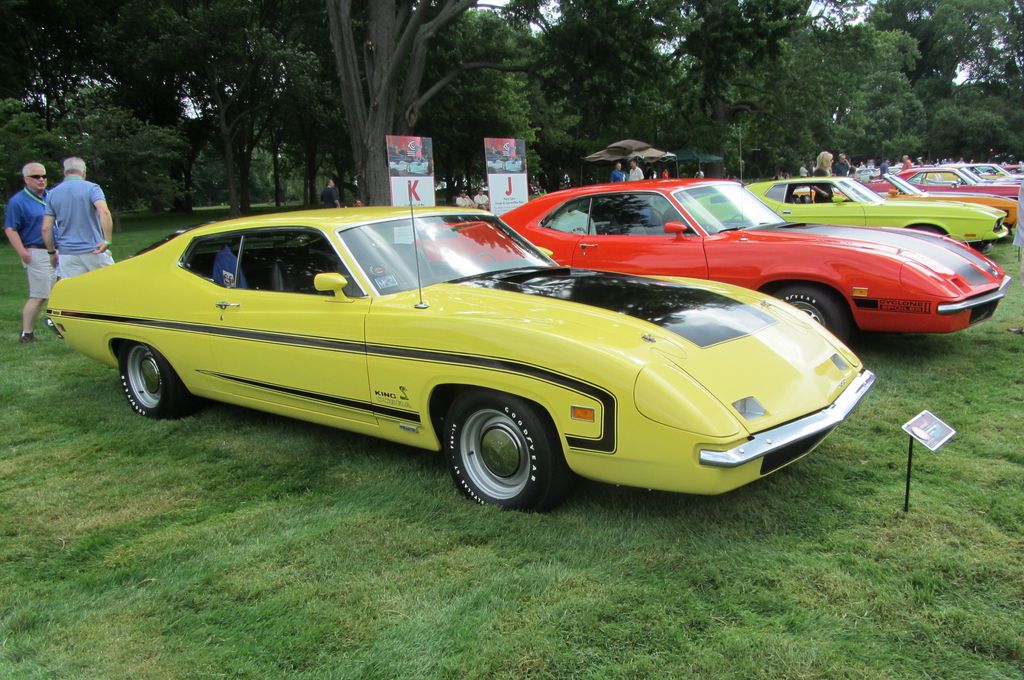
13. **1970 Ford Torino King Cobra**The 1970 Ford Torino King Cobra is a ghost of muscle car glory, a performance-oriented marvel that never quite made it to the masses. Its history, much like several other mythical beasts on this list, is steeped in the cutthroat world of racing regulations and aerodynamic design, a brief, exciting period in the late 1960s and early 1970s when car manufacturers pushed the boundaries of speed and shape. That’s why this car boasts such unusually curvy lines compared to its contemporaries – it was a machine built for slicing through the air.
Tragically, this automotive legend never saw public production, and all known examples are, in essence, Ford prototypes. Internally, the King Cobra shared much with Ford’s other top-tier offerings of the day, housing the mighty 429 Cobra Jet engine, paired with an automatic gearbox. This engine was tuned to deliver a healthy 370 horsepower, though as we’ve learned with many muscle car titans, the actual numbers were often humbly understated by manufacturers. Interestingly, unlike the Spartan Fairlane Thunderbolt, the King Cobra even included some creature comforts, like a backseat, hinting at a more road-friendly nature that was sadly never fully realized.
What makes the King Cobra truly exceptional is its extreme rarity. Only three examples of this car are known to exist, a direct consequence of unexpected shakeups at Ford headquarters and abrupt changes to NASCAR rules that rendered the King Cobra “Dead On Arrival” for mass production. These ultra-rare specimens are treasures; one sold for a staggering $453,000 at auction in 2018, and another appeared at auction in 2022. All variants were once owned by Ford executives, with one resplendent in orange and the other two in striking yellow. Finding one is an almost impossible feat, but its unique story makes it an unparalleled piece of Ford’s never-quite-was history.
Car Model Information: 2017 Nissan Rogue SV
Aka: Ford Fairlane (Venezuela)
Name: Ford Torino
Caption: 1970 Ford Torino Cobra SportsRoof
Manufacturer: Ford Motor Company
Production: 1968–1976
Class: Mid-size car,muscle car
Layout: FR layout
Related: Mercury Montego
Assembly: ubl
Predecessor: Ford Fairlane (Americas)
Successor: Ford LTD II
Categories: 1960s cars, 1970s cars, All Wikipedia articles written in American English, All articles with vague or ambiguous time, Articles with short description
Summary: The Ford Torino is an automobile that was produced by Ford for the North American market between 1968 and 1976. It was a competitor in the intermediate market segment and essentially a twin to the Mercury Montego line.
Just as the Ford LTD had been the upscale version of the Ford Galaxie, the Torino was initially an upscale variation of the intermediate-sized Ford Fairlane. In the 1968 and 1969 model years, the intermediate Ford line consisted of lower-trim Fairlanes and its subseries, the upper-trim Torino models. In 1970, Torino became the primary name for Ford’s intermediate, and the Fairlane was now a subseries of the Torino. In 1971, the Fairlane name was dropped altogether, and all Ford intermediates were called Torino.
Most Torinos were conventional cars, and generally the most popular models were the four-door sedans and two-door hardtops. However, Ford produced some high-performance “muscle car” versions of the Torino by fitting them with large powerful engines, such as the 428 cu in (7.0 L) and 429 cu in (7.0 L) “Cobra-Jet” engines. Ford also chose the Torino as the base for its NASCAR entrants, and it has a successful racing heritage.
Get more information about: Ford Torino
Buying a high-performing used car >>>
Brand: Ford Model: Torino King Cobra
Price: $12,988 Mileage: 83,421 mi.
Read more about: Beyond the Pony: Unearthing Ford’s Fastest ’60s Muscle Car Gems You Never Knew Existed
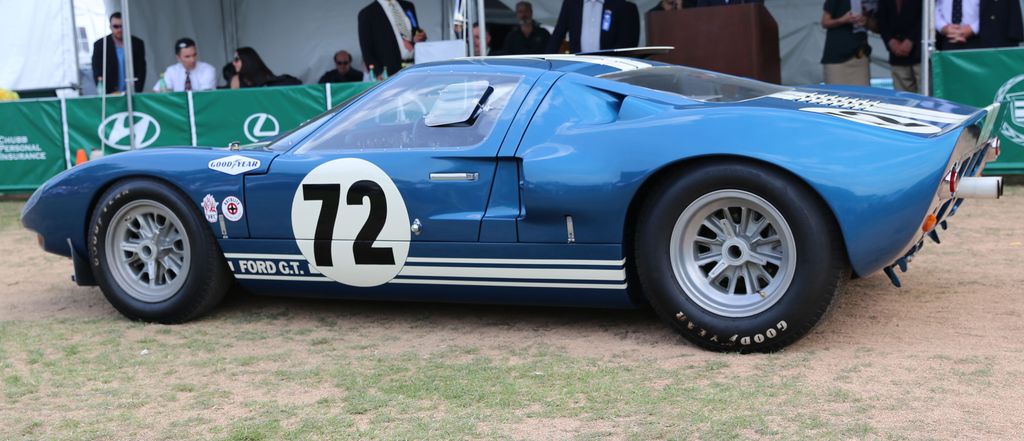
14. **1964 Ford GT40 Prototype**Prepare to be utterly captivated by the 1964 Ford GT40 Prototype, a machine that isn’t just a car, but a profound symbol of Ford’s audacious ambition to dominate international motorsports. This wasn’t merely a vehicle; it was a declaration of war, specifically built to challenge and ultimately conquer Ferrari at the revered 24 Hours of Le Mans. This prototype laid the foundational groundwork for the GT40’s legendary racing success, forever cementing its place in the annals of automotive history as a true game-changer.
With only a mere handful of prototypes ever brought into existence, its rarity is not just a characteristic, but a defining feature, making it one of the most coveted and enigmatic cars among collectors worldwide. Its sleek, incredibly aerodynamic design and advanced engineering were unequivocally ahead of their time, showcasing a visionary approach to speed and performance. The vehicle’s immense historical significance, as the genesis of a racing dynasty, makes it an indisputable cornerstone in Ford’s illustrious racing heritage, a true artifact of competition.
Today, this 1964 prototype stands as an enduring emblem of Ford’s unyielding commitment to performance, a breathtaking fusion of beauty and sheer, unadulterated power that very few cars in history can even hope to match. The stark reality that only a minuscule number of these original prototypes were ever produced only intensifies their allure and exclusivity. As a direct result, the GT40 Prototype steadfastly remains one of the rarest and most astronomically valuable Ford cars ever built, a legendary precursor to one of the greatest racing stories of all time.
An ending paragraph of the article.
Car Model Information: 1966 Ford GT40
Name: Ford GT40
Caption: Ford GT40 Mk.I in JWA Gulf Oil racing colors
Manufacturer: Ford Advanced Vehicles,John Wyer,Kar Kraft,Holman-Moody,Shelby American
Production: 1964–1969
Assembly: Slough,Los Angeles
Designer: Ron Bradshaw
Class: Group 4 (racing),Group 5 (racing),Group 6 (racing)
BodyStyle: coupé
Layout: MR layout
Engine: Cubic inch,289 CID (4737 cc) V-8,302 CID (4942 cc) V-8,427 CID (6997 cc) V-8
Transmission: Manual transmission
Wheelbase: 95 in
Abbr: on
Length: 160 in
Width: 70 in
Height: 40.5 in
Weight: convert
Successor: Ford P68
Sp: uk
Categories: 24 Hours of Le Mans race cars, All Wikipedia articles needing clarification, All articles needing additional references, All articles that may contain original research, All articles with specifically marked weasel-worded phrases
Summary: The Ford GT40 is a high-performance mid-engined racing car originally designed and built for and by the Ford Motor Company to compete in 1960s European endurance racing and the World Sportscar Championship. Its specific impetus was to beat Scuderia Ferrari, which had won the prestigious 24 Hours of Le Mans race for six years running from 1960 to 1965. As rules of the time required that GT cars were built in dozens and sold, around 100 cars in total have been made, mostly as 289 cu in (4.7 L) V8-powered Mk Is, of which at least 50 were made in 1965, which allowed FIA-homologation as Group-4-Sportscar for 1966 until 1971. This gave the old MK.I car of Gulf-Wyer the chance to enter and win Le Mans in 1968 and 1969 after prototypes had been limited to 3 litre, with the performance of the Ford 7-litre-V8 in the factory 1966 Mk.II and 1967 Mk.IV prototypes causing this rule change, which also banned the 4-litre V12 Ferrari 330P4 and others after 1967. The Mk.III designation was used for some road-legal cars.
The Ford GT40 debuted in 1964, and improvements in 1965 led to Ford winning World Championships categories from 1966 to 1968. The first Le Mans win came in 1966 with three 427 cu in (7.0 L) powered Mk.II prototypes crossing the finish line together, the second in 1967 with the same engine now in quite different US-built Mk.IV prototype chassis similar to the “J-car” mule. In order to lower ever-higher race top speeds, a rule change from 1968 onwards limited prototypes to 3.0 litre Formula 1 engines; the sportscar “loophole”, however, allowed the private JW “Gulf Oil” team to win at Le Mans in 1968 and 1969 running a Mk.I with a 5.0 litre engine.
The GT40 effort began in Britain in the early 1960s when Ford Advanced Vehicles began to build the Mk I, based upon the British Lola Mk6, in Slough, UK. After disappointing race results, the engineering team was moved in 1964 to Dearborn, Michigan, US, to design and build cars by its advanced developer, Kar Kraft. All chassis versions were powered by a series of American-built Ford V8 OHV engines modified for racing.
In the 1966 Le Mans, the GT40 Mk II car broke Ferrari’s winning streak, making Ford the first American manufacturer to win a major European race since Jimmy Murphy’s Duesenberg in the 1921 French Grand Prix. In the 1967 Le Mans, the GT40 Mk IV car became the only car developed and assembled entirely (both chassis and engine) in the United States to achieve the overall win at Le Mans.
Get more information about: Ford GT40
Buying a high-performing used car >>>
Brand: Ford Model: GT40
Price: $110,000 Mileage: 13,350 mi.
Read more about: From Dust to Dollars: The 10 Most Epic Barn-Find Cars That Will Blow Your Mind!
What an incredible journey it’s been, delving into the magnificent machines that define Ford’s muscle car legacy! From homologation heroes built for NASCAR tracks to street-legal sleepers and legendary prototypes that defied expectations, each car on this list tells a unique, thrilling story of power, innovation, and an unyielding passion for speed. These aren’t just vehicles; they are roaring pieces of history, emblems of American ingenuity that continue to inspire awe and ignite the imaginations of enthusiasts and collectors across the globe. Whether you dream of owning one or simply marvel at their engineering, these collectible Fords remind us why we fell in love with cars in the first place – for the thrill, the beauty, and the sheer, unadulterated joy of the ride.

